Coin vs. Token – The difference between cryptocurrency coins & tokens
In cryptocurrency realm the term “Coin” and “Token” get tossed around a lot and they are often used interchangeably. Some people call “tokens” as “coins” and some use the word “token” to what others refer to as a “coin” Many think they are the same but in fact they are two completely different concepts.
Understanding the difference between coins and tokens will give you a better grasp of the cryptocurrency markets. So here in this post we decided to cover a simple yet often mistaken topic that confuses new users – Coin vs Token.
Coins and Tokens in Cryptocurrency
Entering the cryptocurrency space can be a complicated task for beginners. They start with Bitcoin and when they find out other thousands of coins and tokens all regarded to as cryptocurrencies things get confusing. While they all are classified as cryptocurrencies there is a technical difference between coins and tokens.
According to the definition, a currency is a store of value, unit of account and is a medium of exchange. There are thousands of crypto coins and tokens. Both coins and tokens can hold and transact value. Hence why they are regarded to as cryptocurrency. However they all are not designed or meant to function as a currency.
So what exactly is the difference between coins and tokens and how are they created. Here we’ll give you explanation on what coins and tokens are along with some examples.
Now before we look into the differences let’s first see what they both have in common.
Similarities: Tokens / Coins
The main similarities between tokens and coins are that they both run on blockchain technology and they are both traded the same way. In fact most of the cryptocurrencies that you come across are based on blockchain technology.
In short Blockchain is a digital, public, distributed and decentralized ledger enforced by network of computers. Each block in the blockchain is a period of time that consist specific set of transactions.
An interesting thing about blockchain is that any information can be recorded on them. Not just currency transfers, but information like ownership of objects and resources etc. Now this is where the difference comes in.
While coins functions like a digital cash which are meant to facilitate payments; tokens on the other hand have a completely different use case.
What are Coins?
Coins are cryptocurrencies that are created on their own native network and they operate on their own independent blockchains.
Bitcoin (BTC) for example is a coin that operates and functions on its own blockchain. Likewise Ether (ETH) functions on Ethereum blockchain. Litecoin (LTC) is used within the Litecoin blockchain and Monero (XMR) exists on the Monero blockchain. All coins have a specific unique blockchain with own set of miners in PoW and stakers in PoS network to verify their transactions.
Use case of Coins:
Coins – As the name suggests they work the same way as real life coins and their main function is to facilitate payments; transfer of value.
Coins have same characteristics as your traditional money. They are fungible, portable, divisible and durable. Except crypto coins are created using encryption techniques and most of them have limited supply.
Basically cryptocurrency coins are digital cash which you can use like physical cash to pay for things and services.
Examples of Coins:
Bitcoin is the best example of a cryptocurrency coin. It acts as a censorship resistant store of value and a medium of exchange. Plus it has a fixed monetary policy. Bitcoin is the most liquid coin and it has the highest market cap in the crypto space.

Ethereum, XRP, Polkadot, Litecoin, Binance Coin, Monero, Dogecoin etc. are some of the examples of Coins. Apart from these there are 1000s of other coins in the cryptocurrency ecosystem and they are commonly referred to as Altcoins.
Learn More: What are Mineable and Non-Mineable coins?
What are Tokens?
While a Coin has its own blockchain, a Token is the opposite. It is a cryptocurrency that does not have its own blockchain. Instead it operates on another blockchain. So on which blockchain do they run on?
As you know there are certain blockchain platforms that allow other projects to build applications on top of their protocol. The best known example is Ethereum which allows users to create, issue and manage tokens.
Due to their smart contract features Ethereum has become the most common platform to create and issue tokens. Most popular tokens that you find today are ERC-20 Tokens which are created on top of Ethereum blockchain and they use the Ethereum network for transfers.
So wait!? Is Ethereum a coin or a token?
Is Ethereum a Coin or a Token?
Ethereum is neither a coin nor a token. It is a smart contracts platform for creating decentralized general purpose computer programs. Ether (ETH) is the native coin of the smart contracts platform.
Ether (ETH) is used for managing, sending / receiving assets, paying transaction fees and interacting with DApps (Decentralized Applications) on the Ethereum network.
While coins uses their native coins as fees; token transfers require fees to be paid with coins on the network which they operate on. For example ERC-20 token transfers require fees in Ether since they rely on Ethereum network.
Apart from Ethereum there are other platforms on which tokens can be build upon such as Binance chain, TRON, NEO, Omni, Waves, Qtum etc. Also check out EVM based blockchains.
Tokens use cases
Just like a coin; a token can also be used as a medium of exchange. But apart from only being used as a means of payment; tokens also offers a wide range of functionalities. Their use cases are virtually limitless.
A token is a digital asset which is issued by the project to be used as a payment within the projects ecosystem. Other than this a token gives rights to holders to participate in the network. It can give access to products or services. A token can represent a company’s share. It can act as a digital representation of a physical asset and there are many more use cases to it.
Currently most blockchain based tokens that you find today fall into any one of these following categories:
Utility Tokens, Security Tokens, Asset Tokens, Stablecoins, Payment Tokens, Equity Tokens and Non-Fungible Tokens (NFTs).
Examples of Tokens
Tether (USDT), Chainlink (LINK), Uniswap (UNI), USD Coin (USDC), Shiba Inu (SHIB), Huobi Token, UMA, Yearn.Finance (YFI), Aave (LEND), Maker, DAI, Compound and Basic Attention Token (BAT) are some of the examples of Tokens. All these tokes are build on Ethereum and all these tokens are build with specific use case in mind.
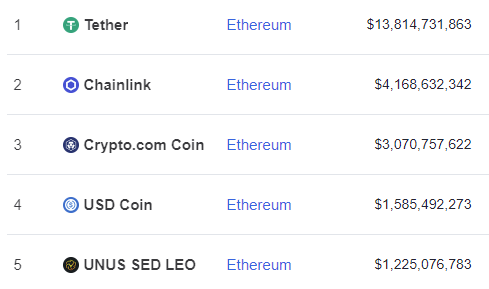
For example Tether (USDT) is a stable coin that is meant to mirror the value of US Dollar. Likewise USDC is a another fully collateralized US dollar stablecoin.
Compound is a token that powers community governance of the compound protocol.
Basic Attention Token is a payment token that is used within the Brave browser ecosystem.
Soon in a separate article we’ll explain what Utility Tokens, Security Tokens, Stablecoins, and Non-Fungible Tokens (NFTs) are?
Coin vs Token: The difference
These are the crucial difference between cryptocurrency coins and tokens.
| Coins | Tokens | |
|---|---|---|
| 1. | Coins run independently on their own blockchain | Tokens run on top of another blockchain that they don’t control. |
| 2. | Majority of coins are mainly used as a form of payment. | Tokens serve different purpose. The offer variety of functions and their use case is specific to the projects ecosystem. |
| 3. | Coins are usually created through the process called mining or staking. | Tokens are usually created and distributed to the general public through ICOs (Initial Coin Offerings). |
Identifying Coins / Tokens
If you are looking at a cryptocurrency and are not sure whether it is a coin or token then here is how you can identify them.
Go to CoinMarketCap.com or CoinGecko.com and find the digital asset that you are looking at. Now check for the tags. If it is coin then it should state coin. If it is a token then it should state token.
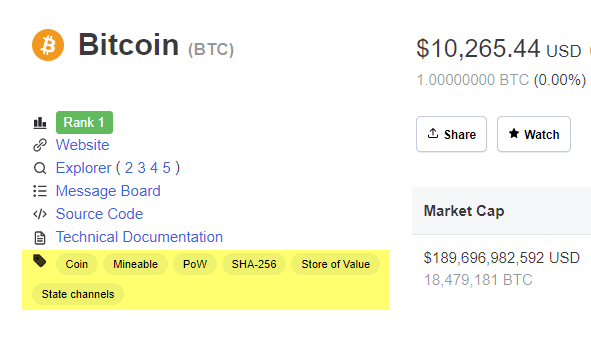
Additionally check the projects block explorer. If it uses native explorer then it is a coin. If you see explorers like Etherscan or Ethplorer then it is a token that operates on Ethereum.

Hope this helps you to recognize whether a digital asset is a coin or a token. We hope now you can fully understand what coins and tokens are and their differences.
Please do share it If you found this guide helpful. Stay tuned for more cryptocurrency guides.

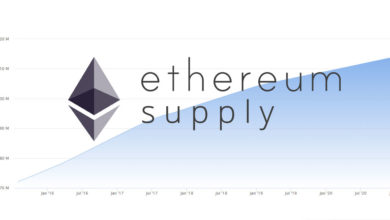

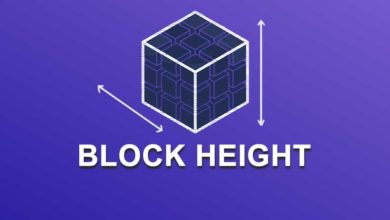
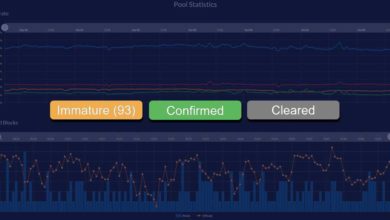
Thank you for the explanation. I was trying to understand my problem with my ethereum wallet. Some time ago I transferred eth from binance to metamask and I was not sure if I had to use erc20 or ethereum network. After some research I decided to do with the erc20 network. Then I didn’t see it in metamask, but etherscan showed that I have expected ether. I don’t know how it started to appear in the browser addon of metamask on brave. The problem is that some minutes ago I tried to stake and I got an error from metamask saying “Wrong network. You need to connect to the ethereum network”. I suppose that I have to trade my erc.20 (token) with ether (coin). Yet I don’t have Idea if its possible and how it can be done. Would appreciate any suggestions. Thanks in advance.
Change the network to Ethereum Mainnet on your Metamask extension. You coin will show up.